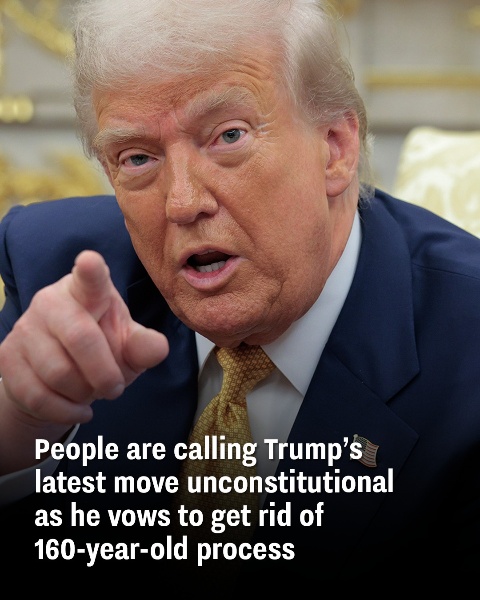
Trump Faces Backlash Over Plan to Eliminate Mail-In Voting
A Longstanding Process Under Threat
Donald Trump has ignited fresh controversy by announcing plans to end mail-in voting, a system in place since the Civil W*r. Critics immediately called the move “blatantly unconstitutional,” pointing out that election laws fall under state authority, not presidential power.
Trump’s Announcement
On August 18, while also trying to position himself as a peace broker in the Russia-Ukraine conflict, Trump posted on Truth Social. He declared his intention to “lead a movement to get rid of mail-in ballots” and scrap electronic voting machines. He argued that paper ballots with watermarks would ensure accurate results, claiming voting machines are “highly inaccurate” and “very expensive.”
The History of Mail-In Voting
Absentee and mail-in ballots have been part of U.S. elections since 1864, first introduced for soldiers during the Civil W*r. The process became especially significant in 2020, when millions of Americans voted by mail during the COVID-19 pandemic. Despite Trump’s loss in that election, multiple studies and courts have confirmed mail-in voting is secure and reliable.
False Claims and Caps-Lock Rhetoric
In his post, Trump insisted—often in full caps—that mail-in ballots enable “massive voter fraud” and argued that “ELECTIONS CAN NEVER BE HONEST” while they remain in use. He promised to sign an executive order to eliminate the process before the 2026 midterm elections, even though other democracies like Canada, the UK, Germany, and Australia also use mail-in voting.
Pushback From Experts
Legal experts quickly pushed back. Democracy Docket stated on X (formerly Twitter): “The Constitution grants states, not the president, the primary authority to regulate elections.” Lawyer Joyce White Vance added: “Each state runs its own election.”
The White House Responds
A White House spokesperson defended Trump’s stance, blaming Democrats for “eroding faith in elections with reckless laws” and emphasizing his push for stricter voter ID laws. According to the statement, Trump aims to “restore the integrity of our elections” by tightening ballot rules and reducing what his team calls “lax and incompetent voting laws.”
A Brewing Constitutional Clash
With Trump determined to push through his plan and critics united against it, the debate over mail-in voting is set to intensify. The clash highlights not only deep partisan divides but also fundamental questions about presidential power and the future of American democracy.



